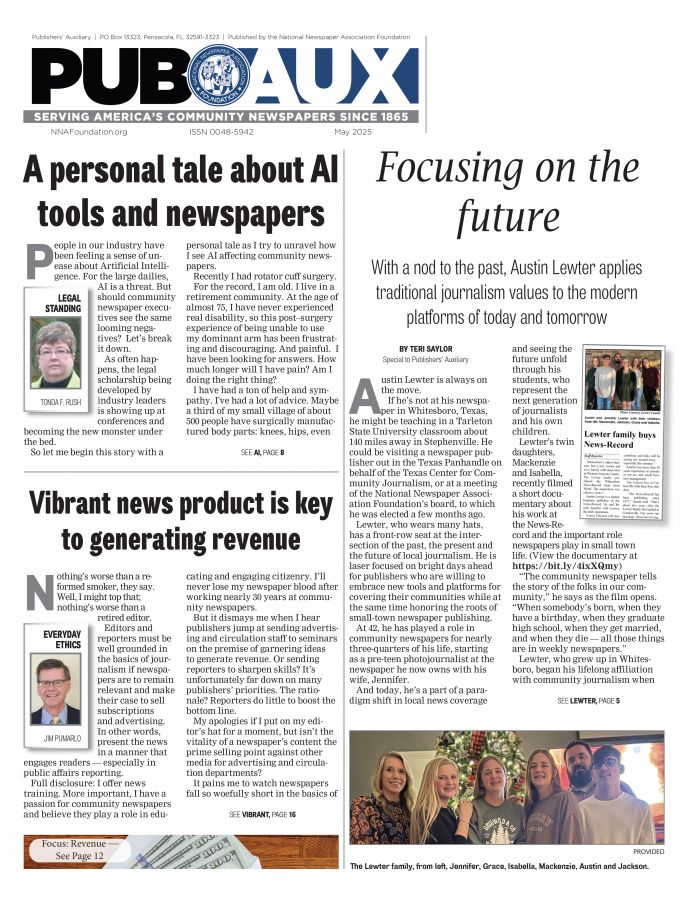Examine, evaluate reporting shortcuts
Jim Pumarlo
Feb 1, 2022


I fondly characterize newsrooms as organized chaos. I witnessed that firsthand, guiding staffs when resources were plentiful and community newspapers had captive audiences.
Dynamics are even more frayed in today’s changing media landscape as editors grapple with diminished resources and increased constraints on news gathering.
Editors and reporters necessarily must explore and implement shortcuts, but you should keep two questions at the forefront: Are you really saving time considering the extra legwork that might be required to produce complete and compelling reports? Most important, are stories still relevant to readers and advertisers?
Brainstorm with your staffs, examining the pros and cons of each tool.
SHORTCUT: REPORTERS DEPEND MORE ON WEB STREAMING OF GOVERNMENT MEETINGS
Reporters benefit by being able to multitask during the “dead time” of meetings, and still give full attention to those items of highest interest. Broadcasts also can be reviewed later.
On the flip side, how often have broadcasts run into technical difficulties such as poor audio? Are reporters accurately recording all votes and quotes, correctly identifying all individuals who address a body? Without being there in person, reporters can easily fall into the trap of writing for “those in front of the room” instead of translating what actions mean for “those in back of the room.”
SHORTCUT: REPORTERS DEPEND MORE ON PHONE INTERVIEWS
Reporters still have the ability to gauge the temperament of interviewees: i.e., cooperative, combative, evasive. It’s easier to schedule interviews amid demanding schedules.
But reporters can be challenged to control the environment. Interviewees can more easily cut short conversations or refuse to answer uncomfortable questions. Phone interviews also are a missed opportunity to capture elements essential to fleshing out a story — especially a feature — such as describing a scene or a person’s body language.
SHORTCUT: REPORTERS DEPEND MORE ON ZOOM FOR INTERVIEWS
Zoom provides opportunity for face-to-face interviews and follow-up questions.
Reporters might confront technical difficulties here, too. Interviewees also might short-circuit an exchange by limiting the length of a session.
SHORTCUT: REPORTERS DEPEND MORE ON EMAIL FOR INTERVIEWS
Interviewees typically have more time and flexibility to respond to questions, thus producing a better story. It’s likely easier for reporters to write a story versus sifting through and transcribing notes. A Q&A can be a clear and concise way to present some stories, especially profiles on individuals.
At the same time, email interviews limit opportunity, or at least make it more difficult, to ask follow-up questions. Responses often are published verbatim with no attempt at editing and thus lack a conversational flow; they might even be written by a communications specialist. The most important information often is buried if answers are simply published in the order the questions were asked.
SHORTCUT: NEWSROOMS DEPEND MORE ON CORRESPONDENTS AND FREELANCERS
A good stringer corps can effectively stretch resources. Correspondents do not necessarily have to write a full story but can assist in collecting essential information such as soliciting instant feedback from citizens attending a meeting. Freelancers might have a particular interest or expertise, thus minimizing the preparation for an assignment.
On the other hand, skill levels can vary greatly. Don’t underestimate the extra work that could be required to get a stringer’s draft ready for publication. Editors also should consider potential conflicts of interest, such as hiring someone to cover city council who unsuccessfully sought office.
All of these tools can likely be used in varying degrees, but substantive reports must remain a priority. Don’t let shortcuts undermine the credibility of your product.
For example:
What message are you sending to readers if you report a 4-3 vote by the city council without identifying the votes?
What message are you sending by relying on a press release, published verbatim, from the fire department — accompanied by a photo also submitted by the department – as your sole report on a downtown fire? An injured firefighter remains nameless.
What message are you sending if the city’s biggest property taxpayer announced a proposed change in its operations — both in virtual and in-person meetings promoted by a full-page ad — and the newspaper attends neither meeting? The story appears nine weeks later after the company makes a presentation to the city council.
Solid reporting means delivering the 5 Ws and H. Sticking to the tenets of journalism is essential if you are to promote yourselves as the newspaper of record in your communities.
Jim Pumarlo is former editor of the Red Wing (Minnesota) Republican Eagle. He writes, speaks and provides training on community newsroom success strategies. He is author of “Journalism Primer: A Guide to Community News Coverage,” “Votes and Quotes: A Guide to Outstanding Election Coverage” and “Bad News and Good Judgment: A Guide to Reporting on Sensitive Issues in Small-Town Newspapers.” He can be reached at www.pumarlo.com and welcomes comments and questions at jim@pumarlo.com.










